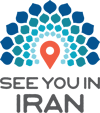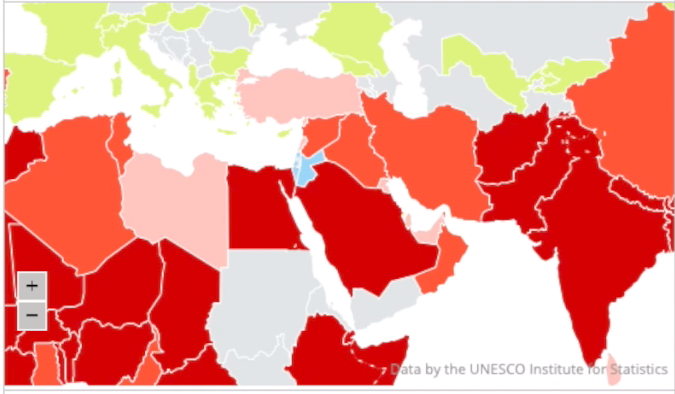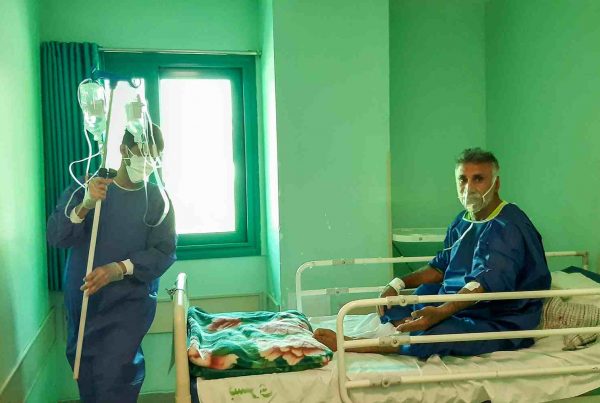Education
Access to education for girls and women has increased in recent decades across MENA region. This is reflected in enrolment, participation and completion rates at the primary, secondary and tertiary levels, and it demonstrates advancements towards gender parity, particularly in the past two decades. Indictors also reveal that more girls than boys enroll in tertiary education, particularly in Iran, Jordan, Lebanon, Saudi Arabia, Tunisia, and West Bank and Gaza (World Bank 2013). At the tertiary level, Bahrain, the United Arab Emirates and Libya see some of the highest levels of female participation, particularly in the disciplines of Science, Technology, Engineering and Mathematics (UNPD 2005). Indeed in recent years, the percentage of women in engineering and the science in MENA countries is comparable to or higher than in more developed countries (World Bank 2009).
Video Source: UNESCO / Video Edit: SYI Cultural House
آموزش
در دهههای اخیر دسترسی دختران و زنان در خاورمیانه و شمال آفریقا به آموزش افزایش یافته است. این افزایش دسترسی در نرخ ثبت نام، مشارکت و به پایان بردن هر دورهی تحصیلی و در سطوح ابتدایی,، دبیرستان و تحصیلات تکمیلی مصداق دارد و نشان دهندهی پیشرفت و حرکت به سوی برابری جنسیتی در حوزهی آموزش است. شاخصها همچنین نشان میدهند در کشورهایی مانند ایران، اردن، لبنان، عربستان سعودی، تونس، کرانه باختری و غزه تعداد دخترانی که به تحصیلات تکمیلی راه مییابند بیشتر از پسرهاست (بانک جهانی ۲۰۱۳). در سطح تحصیلات تکمیلی، کشورهای بحرین، امارات متحده عربی و لیبی بیشترین نرخ مشارکت تحصیلی زنان را در رشتههای علوم، تکنولوژی، مهندسی و ریاضیات داشتهاند (برنامهی توسعه سازمان ملل ۲۰۰۵). در سالهای اخیر درصد زنان محصل در رشتههای مهندسی و علوم در کشورهای خاورمیانه و شمال آفریقا، قابل مقایسه و حتی بالاتر از همین درصد در کشورهای توسعه یافتهتر است (بانک جهانی ۲۰۰۹).
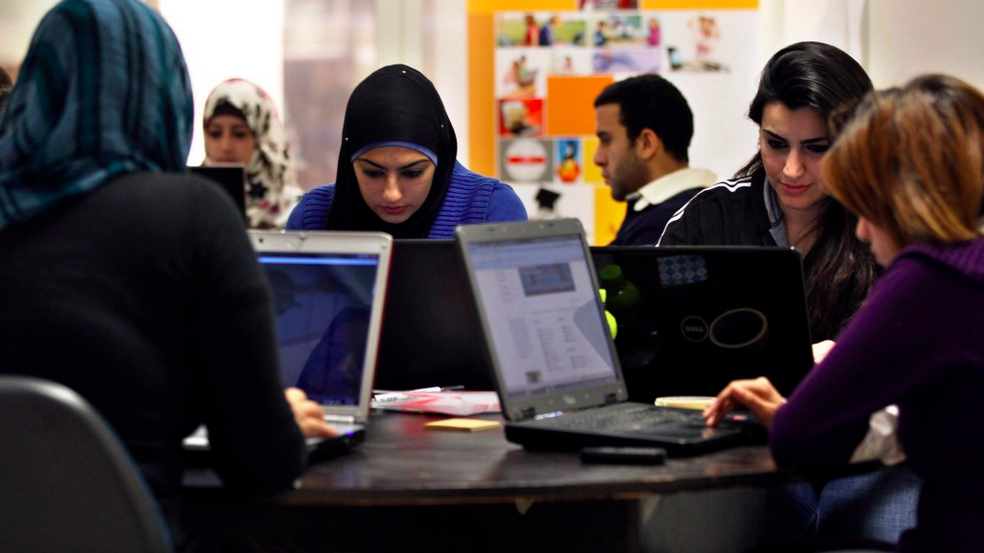
Employment
In a phenomenon referred to as the “MENA paradox”, rising literacy and educational attainment for women has not translated into labor force participation, and the share of women in work is still the lowest in the world. Only occupied lands have a relatively even workforce, with women representing 47 percent of labor in the economy. Turkey and Kuwait have a female workforce share of about 30 percent. All other economies are well below 30 percent. In line with patriarchal culture, women bear the brunt of unpaid care work, including disproportionately more hours spent on housework and caring for children, the sick and the elderly. Women tend to be over-represented in informal and vulnerable labor. Women participation in labor occurs mostly in the public sector (education, health, agriculture) while they are missing from the private sector, industry, professional and managerial roles. The gender pay gap in the MENA region is one of the world’s highest, at roughly 40 percent and at this rate, it will take 157 years to close this gap (World Economic Forum 2017).
Photo: Brookings
اشتغال
در پدیدهی «پارادوکس خاورمیانه و شمال آفریقا»، افزایش میزان سواد و تحصیلات زنان منجر به افزایش متناسب مشارکتشان در بازار کار نشده و سهم زنان از نیروی کار این منطقه هنوز هم پایینترین میزان در دنیاست. تنها سرزمینهای اشغالی نیروی کار نسبتا متوازنی دارد و زنان ۴۷ درصد کارگران اقتصاد آن را تشکیل میدهند. این سهم در مصر و ترکیه حدود ۳۰ درصد و در باقی اقتصادهای منطقه کمتر از ۳۰ درصد است. همراستا با فرهنگ پدرسالارانه، بار کار بدون دستمزد، بیشتر بر دوش زنان است که شامل ساعات بسیار بیشتر کار در خانه و مراقبت از کودکان، بیماران و سالمندان میشود. زنان عموما بیشتر از مردان در کارهای غیررسمی و پرخطر به کار گرفته میشوند. مشارکت زنان در بازار کار عموما در بخش عمومی (آموزش، سلامت و کشاورزی) است و عمدتا از بخش خصوصی، صنعت، مشاغل حرفهای و مدیریتی غایبند. یکی از عمیقترین شکافهای دستمزد میان زنان و مردان متعلق به منطقه خاورمیانه و شمال آفریقا و برابر با ۴۰ درصد است. اگر سرعت حرکت بسوی برابری تغییرنکند، حدود ۱۵۷ سال برای بسته شدن این شکاف در منطقه زمان لازم است (مجمع جهانی اقتصاد ۲۰۱۷).
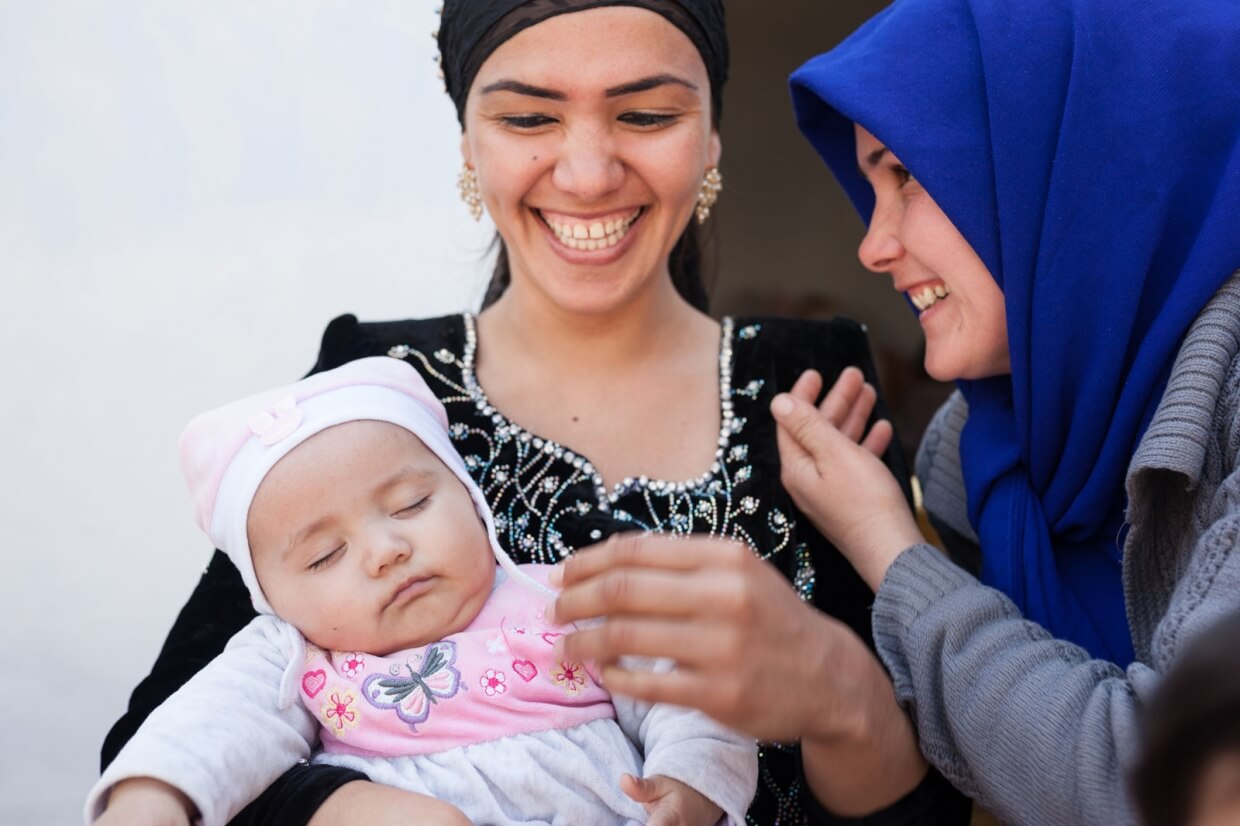
Health
The big picture in the MENA region with regards to women’s health is positive: indicators for life expectancy, fertility and maternal mortality rates (with some exception) are increasingly good. Life expectancy has increased since 1960 in every country in the region, mirroring global trends. Progress in the healthcare sector has led to a decline in premature deaths from communicable disease and nutritional deficiency, and lower levels of maternal deaths – though recent conflicts, such as in Syria, Libya and Yemen, have led to a partial reversal of these gains (between 2010 and 2013, female life expectancy fell from 80 to 75 years in Syria). The number of children born per woman has decreased from 5.7 in the 1970s to 2.9 since 2010. maternal mortality rates declined by 50 per cent, from 200 deaths per 100,000 live births in 1990 to 80 deaths per 100,000 live births in 2015. Though the positive indicators in health stand in contrast to a negative picture in the area of women’s physical integrity.
Photo: Pierre Thiriet
Source: MENA Final Report, Middle East and North Africa Regional Architecture 2019.
بهداشت و سلامت
نمای کلی وضعیت سلامت زنان در منطقهی خاورمیانه و شمال آفریقا، مثبت است: شاخصهای امید به زندگی، نرخ باروری و نرخ مرگ و میر در بارداری، در دهههای اخیربجز چند استثنا بهبود قابل توجهی داشتهاند. از سال ۱۹۶۰ امید به زندگی در تمامی کشورهای منطقه همراه با روند جهانی افزایش پیدا کرده است. دستاوردهای متعدد در بخش بهداشت و سلامت منجر به کاهش مرگ زودرس ناشی از بیماریهای واگیردار و سوءتغذیه و پایین آمدن میزان مرگ و میر در بارداری شده است ـ البته درگیریهای اخیر در منطقه مانند جنگهای سوریه، لیبی و یمن به معکوس شدی بخشی از این دستاوردها انجامیده (در سوریه از سال ۲۰۱۰ تا ۲۰۱۳ امید به زندگی زنان از ۸۰ به ۷۵ سال کاهش یافت). تعداد کودکانی که هر زن در منطقه خاورمیانه و شمال آفریقا به دنیا میآورد از ۵.۷ کودک در دهه ۱۹۷۰ به ۲.۹ کودک در ۲۰۱۰ کاهش پیدا کرده است. نرخ مرگ مادر در هنگام زایمان نیز با کاهش حدودا ۵۰ درصدی مواجه شده و از حدود ۲۰۰ مرگ از تولد هر ۱۰۰،۰۰۰ نوزاد زنده در ۱۹۹۰ به ۸۰ مرگ از تولد هر ۱۰۰،۰۰۰ نوزاد زنده در ۲۰۱۵ رسیده است. هرچند وضعیت نامناسب «حق مالکیت زنان بر بدنشان» در این منطقه در تناقض با این شاخصهای مثبت در حوزهی سلامت قرار دارد.
